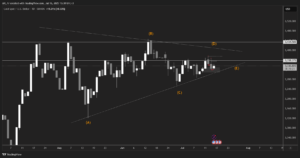But there is still a long way to go.
Trend acceleration is the topic of this decade, and inclusiveness in the financial sector has earned a boost, with more women being hands-on with their investments.
The underlying obstacle
For men or women alike, the lack of interest in investing is associated with a lack of financial literacy. In this regard, it is not gender that is the problem, but it is factors like the lack of relevant education, or one’s financial capacity that seem to determine people’s interest in investing.
What history has shown us, is that women are equally capable of succeeding in the fields of science, technology, engineering and mathematics and finance. The names of Marie Curie, Rosalind Franklin, Victoria Woodhall, and Tennessee Clafin are just a few examples of pioneering women who broke the gender barrier.
However, society has decided otherwise. It is only in the recent past – around the 1960s and 1970s – that women gained the right to work freely, open a bank account without marital approval, get a credit card with their own names and without their husband’s signature, or have their own property.
Nearly half a century later, women’s relationship with investment has also been positively changing.
What the trends are showing
Research reports some interesting findings. According to Fidelity Investments’ 2021 Women and Investing Study, an average of 67% of women are now investing savings in the stock market, which is a 50% increase from 2018. When disaggregated by generation, Millennial women (ages 25-40; 71%) invest the most, followed by Gen X (ages 41-56; 67%) and Boomers (ages 57-75; 62%).
The results from Fidelity Investments are certainly encouraging. Relevant to this, a Bank of New York study also shows that women have a lower risk tolerance than men. Only 9% of women report having a high or very high level of risk tolerance, while 49% show a moderate level of tolerance and 42% a low level. Equally importantly, when women do invest, they outperform their male counterparts by an average of 0.4%.
Furthermore, the study found that women, especially younger ones, tend to favour investments that would have a positive social and environmental impact and which correspond to their personal values. Specifically, seven out of ten women under 30 say they prefer to invest in companies that support their personal values.
The cost of the gender gap
Even though more women invest now compared to even three years ago, the Bank of New York study shows that, still, 73% of asset managers target mostly men with their products. In other words, the benefits and features that they offer to their customers are ones that are more appealing to men rather than women.
Women are not only underrepresented among investors but the gap is also seen in the industry.
Nearly three-quarters of asset managers surveyed by the Bank of New York believe that the investment industry would benefit from female fund managers as they would serve as role models for female clientele. Yet, asset management is still a predominantly male-dominated industry; half of the firms surveyed indicated that just 10% or less of their fund managers or investment analysts are women.
As the saying goes, women and girls represent half of the world’s population and therefore also half of its potential. In 2021, BNY Mellon Investment Management conducted a large-scale study that explored the views of 8,000 women and men, as well as a hundred asset managers in fifteen countries. The study reported that, for its lack of inclusiveness, the industry would be missing nearly USD 3.2 trillion in AUM and USD 1.87 trillion in Responsible Investment per year.
Disclaimer: This article is not investment advice or an investment recommendation and should not be considered as such. The information above is not an invitation to trade and it does not guarantee or predict future performance. The investor is solely responsible for the risk of their decisions. The analysis and commentary presented do not include any consideration of your personal investment objectives, financial circumstances or needs.





